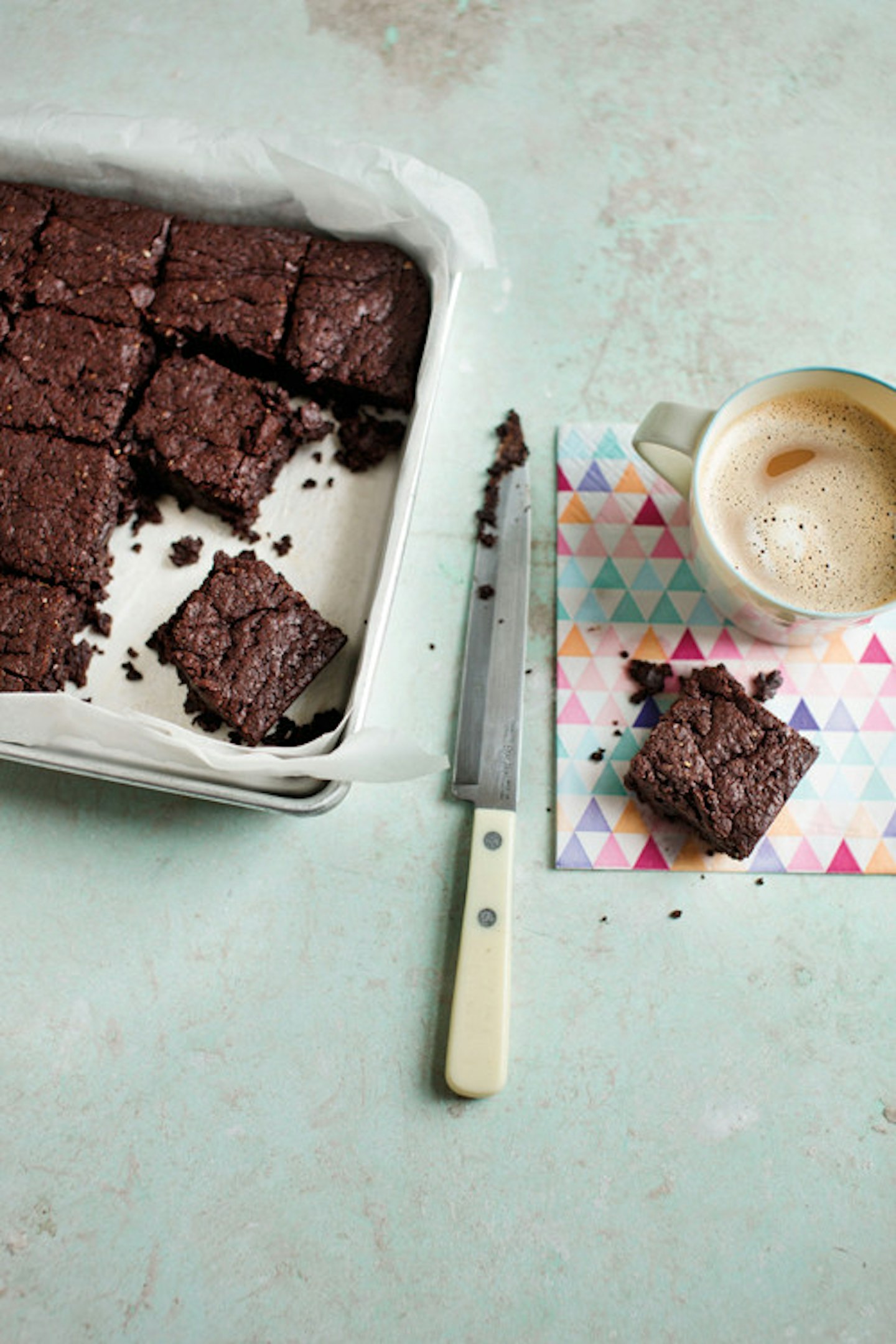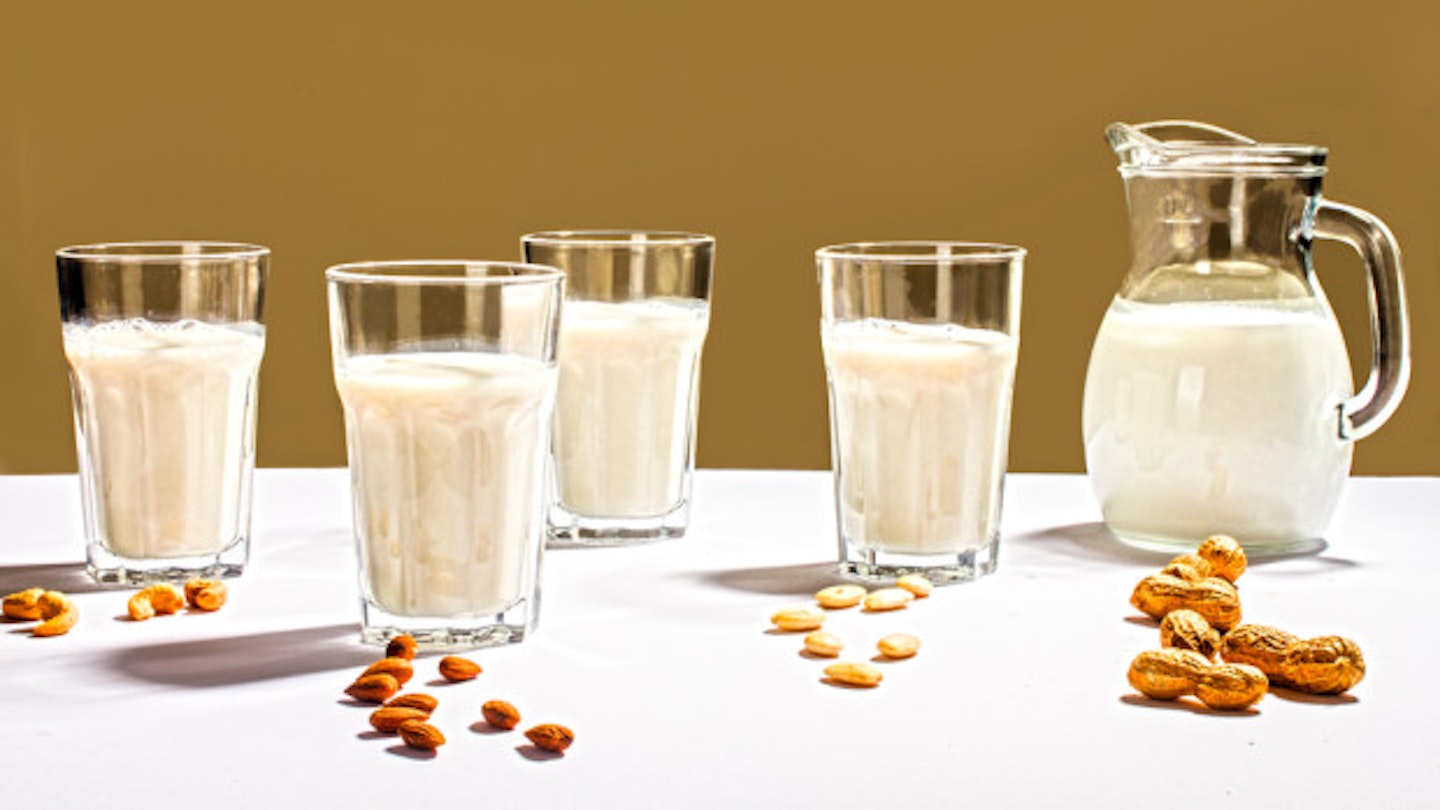Can’t eat dairy? Bummer, me neither. When you give up the cow’s stuff for whatever reason (I’m lactose intolerant, some people have milk allergies, some find cutting out dairy improves their skin, or are on a Deliciously Ella-inspired health kick), the world can seem a less creamy, chocolatey and altogether less-delicious place. That needn’t be the case. I’ve spent the last two years developing recipes for my book Dairy-Free Delicious and, with a few clever hacks you can make lasagnes, creamy sauces, lush desserts, classic cakes and brunch dishes without dairy.
All of the tricks below involve ingredients you’ll find in at least some of the big supermarkets, and none of them involve ordering weird health powders off the internet. Happy cooking…
Use coconut yogurt instead of crème fraiche
Coconut yogurt is a good substitute for crème fraiche as the plain variety has a similar consistency and tang. CoYo is best for this as it’s really thick (get it from Tesco, Ocado or Waitrose). Swirl it into soups, serve a dollop with puds, or make savoury yogurt dips and dressings by adding a little crushed garlic, a squeeze of lemon, sea salt and fresh herbs like coriander or flat-leaf parsley.
Oat cream is a good substitute for single cream – sometimes!
Oat cream has the same colour and consistency as single cream. But before you start pouring it over your strawberries, know this – it definitely doesn’t taste like single cream. It’s as yummy as you’d expect oats emulsified with oil to be, so before you add it to dishes you’ll need to gussy it up. This means vanilla extract and a little golden caster or icing sugar for sweet dishes, and garlic and perhaps spices or mustard powder for savoury ones. Look for it in Waitrose or Holland & Barrett.
Make fake buttermilk
Mmmm, that recipe for fluffy muffins/chocolate cake/pancakes looks good. Except, oh wait…it contains a ton of buttermilk. It serves a clever purpose in baking because the acid in the buttermilk reacts with bicarbonate of soda to create a good rise. You can make a good approximation of buttermilk by squeezing a little lemon juice into almond milk, stirring it and leaving for 5 minutes. I use this trick several times in the book, including to make American-style pancakes, because it’s my firm belief no-one should have to live without good pancakes.
Use oil to make cakes
I make a light and airy Victoria sponge with rapeseed oil. No-one would know it’s not the traditional version, laced with butter. Equally, olive oil makes great cakes which is why it’s been used for this purpose in places like Italy and the Middle East for centuries. Avoid extra-virgin though, unless you really want to taste its flavour in the final cake (and even then, I’d use mainly light olive oil and just 25ml or so of extra-virgin, that stuff is expensive). Follow a recipe though, as it’s not a straight swap between butter and olive oil due to their different densities.
Coconut whipped cream = endless desserts
Eton Mess, pavlovas, trifles: there’s few puds not enhanced by a big ol’ serving of whipped cream. Coconut whipped cream is a brilliant alternative. Get a carton of coconut cream (NOT creamed coconut, which is a solid block) and chill it in the fridge for several hours in the carton. Take it out when you’re ready to use it and pour away almost all the excess water, reserving a little just in case you need to thin the cream when you’re whipping it. Use an electric whisk and add a little vanilla and sugar. After a couple of minutes you’ll have whipped cream. I like Sainsers own-brand and Blue Dragon coconut cream for this, as both go nice and thick after a bit of a chill.
Here's Katy's recipe from her new book for dairy (AND gluten) free brownies...

Ingredients
225g dark chocolate
70% cocoa solids
260g light muscovado sugar
200ml sunflower oil
50g cocoa powder
1/ 2 teaspoon gluten-free baking powder
Pinch of sea salt
50g ground hazelnuts
3 eggs, lightly beaten
20-cm square tin, greased and lined
Method
Preheat the oven to 180°C/350°F/Gas Mark 4.
Chop 200g of the chocolate into small chunks. Half-fill a saucepan with water and heat over a low-medium heat until simmering. Put the chocolate chunks, sugar and 100ml of the oil in a heatproof bowl and place it so it is resting on the rim of the saucepan, but not touching the water. Stir with a wooden spoon until all the chocolate has melted. Remove from the heat and set aside to cool a little.
Meanwhile, chop the remaining 25g of chocolate into chocolate-chipsized chunks and place to one side. Sift the cocoa powder, baking powder and salt together in a separate bowl and stir in the ground hazelnuts.
Using an electric whisk, or the paddle attachment of a stand mixer, gradually add the beaten eggs, 2 tablespoons of the cocoa powder mixture and the remaining oil to the melted chocolate mixture until they are all combined and you have a glossy mixture.
Fold in the remaining cocoa powder mixture with a large metal spoon just until combined. Stir in the chocolate chip pieces.
Spoon the mixture into the prepared tin, smooth the surface and bake for 25–30 minutes until the top has formed a crust and the inside is cooked but still fudgy. Allow to cool for at least an hour in the tin before cutting into squares.
Katy Salter is the author of Dairy-Free Delicious (Quadrille, £18.99)
Like this? Then you might also be interested in:
Here's Your Next Healthy Under-A-Fiver Lunch To Make For This Week
Another Super Easy, Under A Fiver Lunch Recipe To Make This Sunday
Follow Katy on Twitter @KSalty
Photo: Maurizio Diiorio
This article originally appeared on The Debrief.
